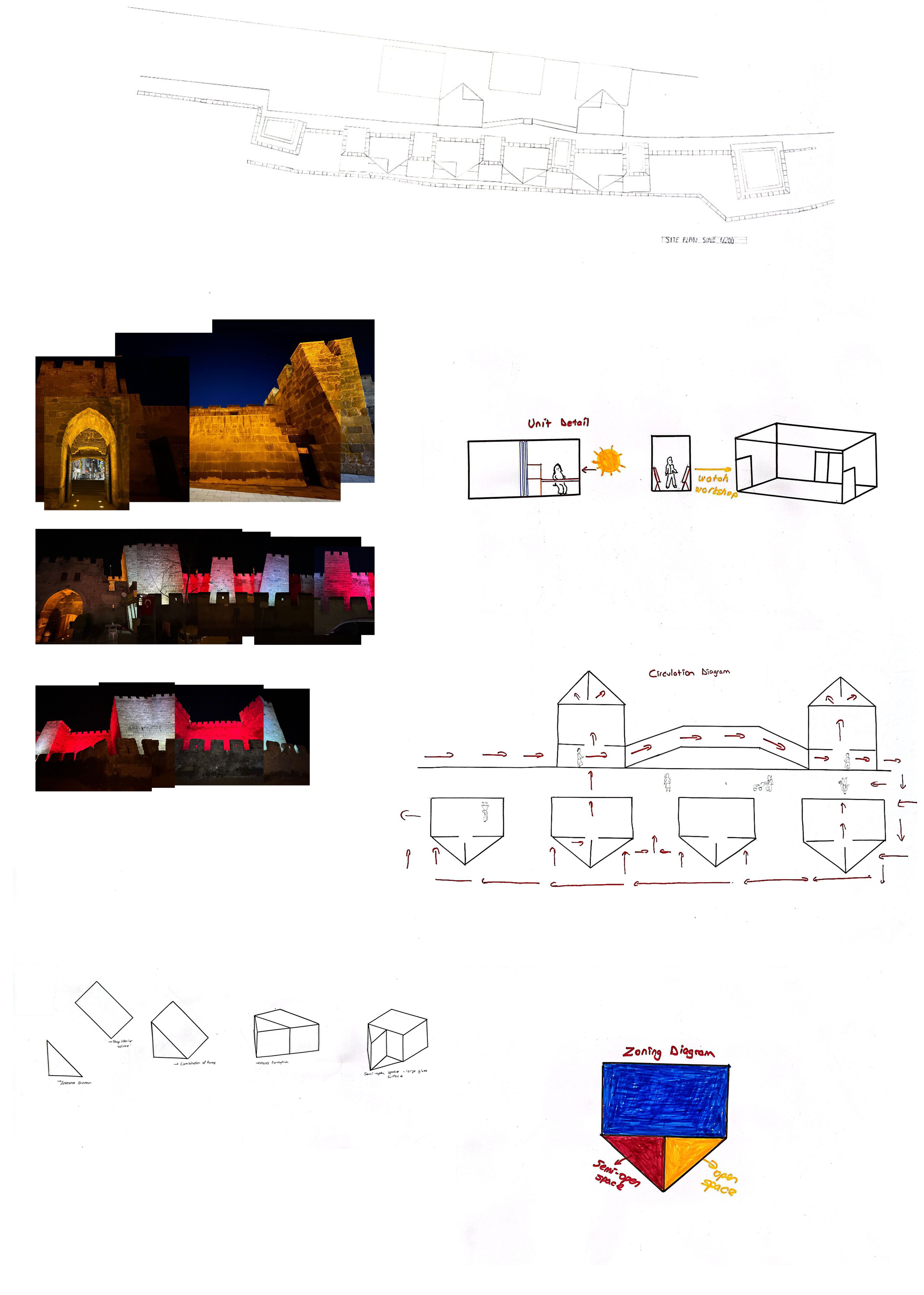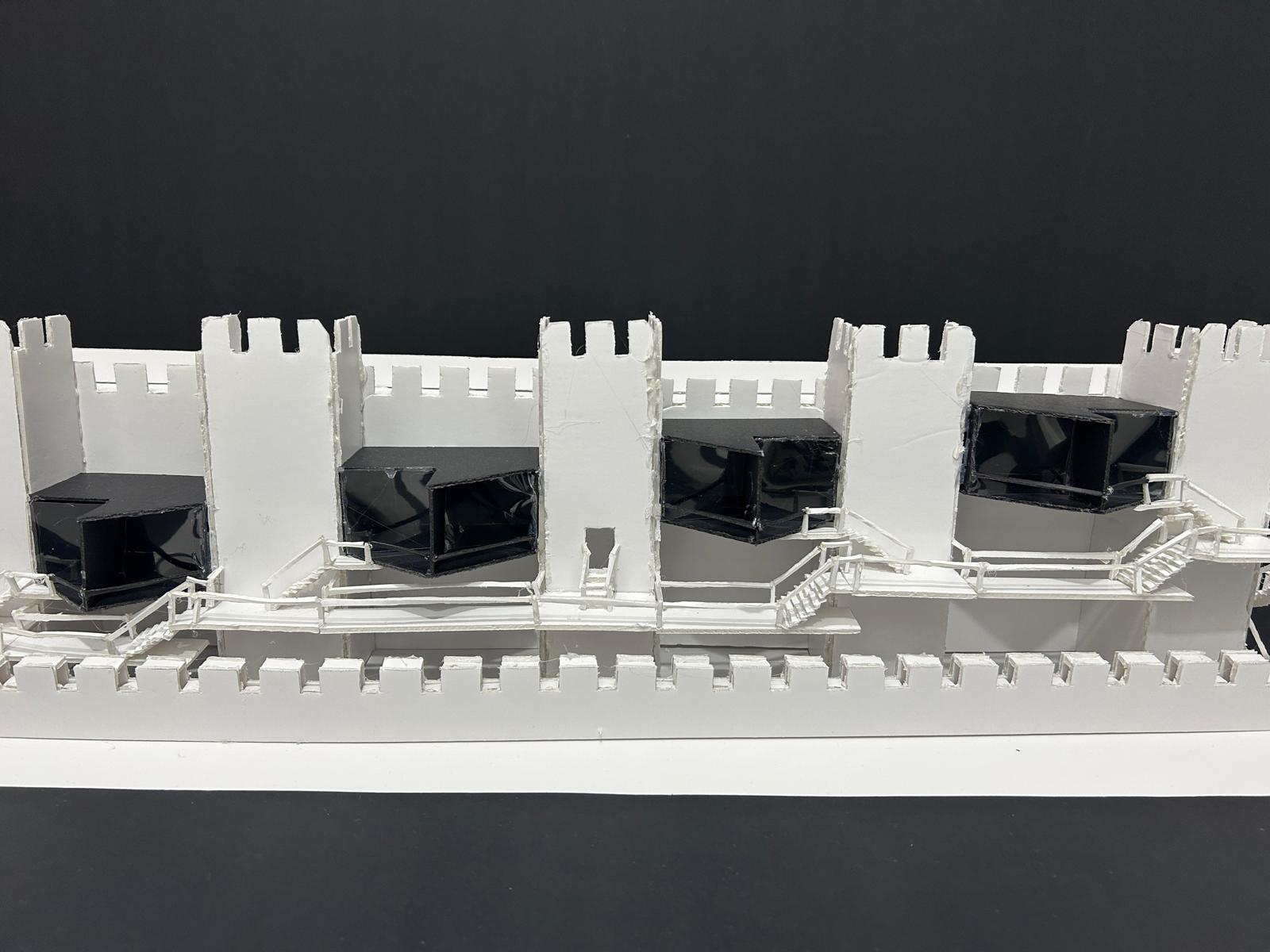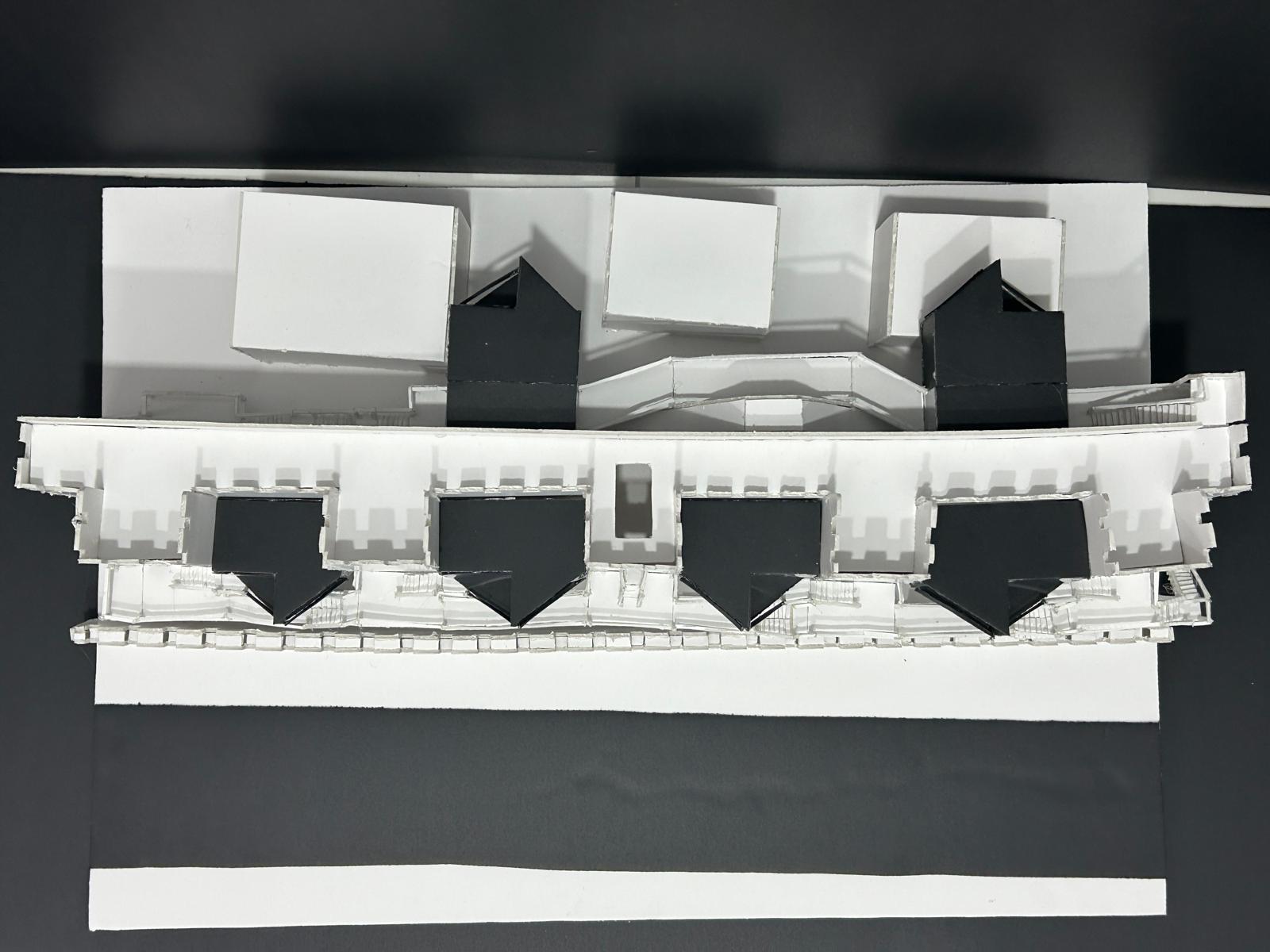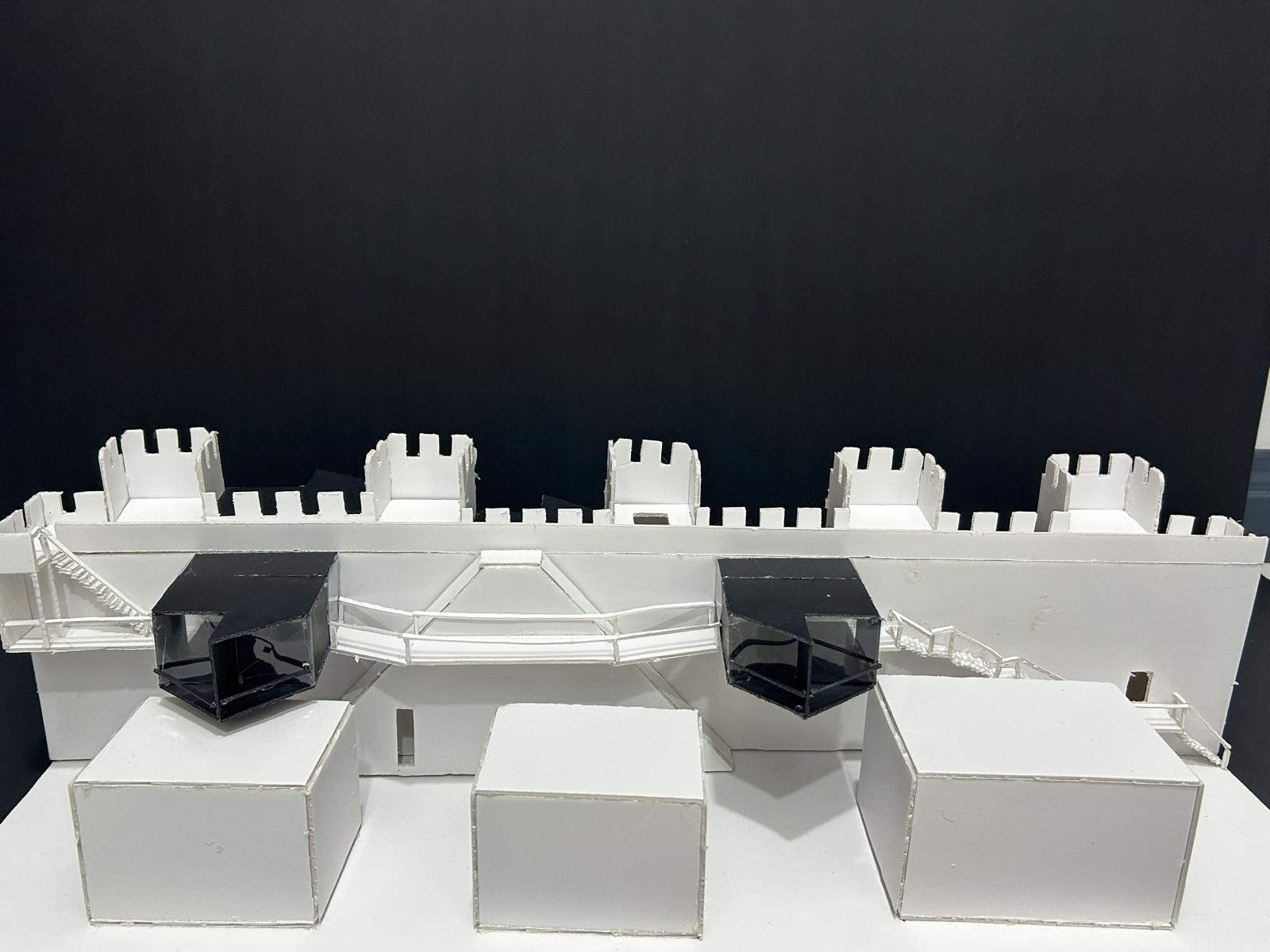CRAFT HAVEN / Gökçe Beyza Efe
Experiencing Art: Handicraft Design within the Castle Walls
General Concept and Purpose
This project aims to create a space within the historic walls of Kayseri Castle where local handicrafts become visible, accessible, and participatory. Rather than treating the castle as a static heritage site, the design reactivates it as a living production and exhibition area, connecting traditional artists with the public.
Each shop is dedicated to a different branch of traditional craftsmanship jewelry, calligraphy, fabric, and marbling offering visitors the opportunity to observe, engage in, and learn about these layered cultural practices.
Spatial Setup and Circulation
Shops are placed parallel to the main walkway but located at higher levels, forming a stepped layout that responds to the site’s natural topography. Each shop is accessed through its own open platform, which also serves as an inviting resting and interaction area.
The architectural rhythm created by these height variations encourages vertical movement through ramps and staircases. Visitors begin at the lower level and gradually ascend through the craft spaces, eventually reaching a shared exhibition terrace at the top.
Transparent façades allow people walking below to view the ongoing production processes inside the shops, sparking curiosity and drawing them upwards to participate.
Behind the artisan street, a stairway leads to a tunnel-like exhibition corridor. This passage, enclosed with large glass façades, serves as both a display and transition space. Visitors can observe the art through the glass or enter the exhibition through doorways. The route concludes at a panoramic terrace where the journey culminates in reflection and rest.
Shop Typologies and Experience Spaces
Each shop combines production and interaction. Wide windows and outdoor seating make the interiors visually and physically accessible.
The Jewelry Shop features bead-based designs and offers workshops for creating personal pieces.
The Calligraphy and Marbling Shops allow visitors to try traditional techniques through hands-on demonstrations.
The Fabric Shop provides sewing tools and encourages visitors to design simple textile items.
All shops are ventilated naturally and have open areas to enhance comfort and usability.
User Narrative
As the visitor walks along the path within the castle walls, their eyes are drawn upward to the ascending row of craft shops. The first stop is the Jewelry Shop, accessed via a gently sloped ramp. After resting in the open area, they enter and admire the handmade pieces, eventually joining a small workshop to design their own.
Continuing upward, the visitor reaches the Calligraphy Shop, where they experiment with traditional script techniques. Further along is the Fabric Shop, where they choose textiles and sew a custom bag. Finally, they arrive at the Marbling Shop, the highest point of the route. Here, they watch a live demonstration before creating their own design.
From this final shop, a stairway leads them into a tunnel-like exhibition corridor. Through glass walls, they view displayed artworks and step inside to explore further. The journey ends at a scenic terrace, where craft, space, and memory come together. 




